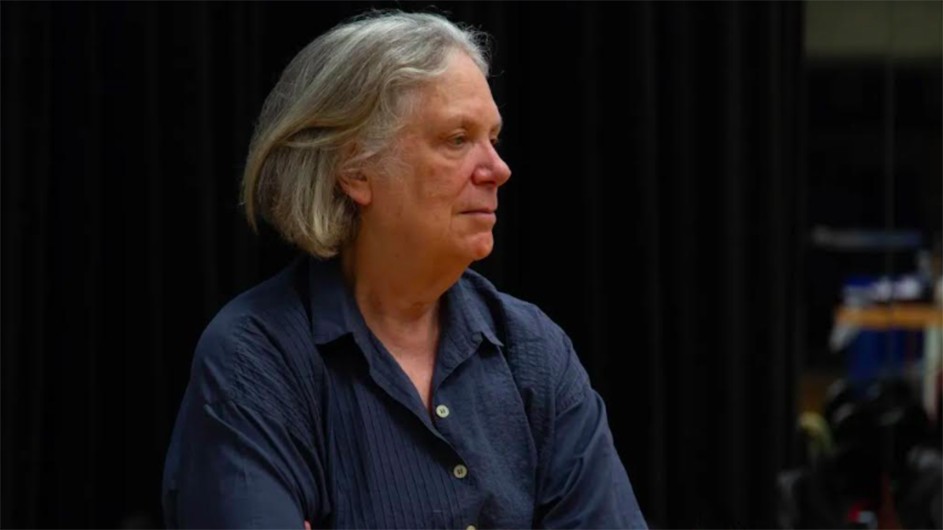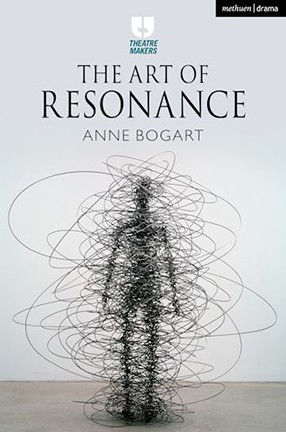A Collection of Essays Considers Resonance in the Arts
Theater director Anne Bogart draws connections between visual art, performance theory, neuroscience, music, and architecture in her new book.

In her latest book of essays, The Art of Resonance, Professor Anne Bogart, head of the directing concentration in the theatre program at School of the Arts, creates connections between performance theory, art history, neuroscience, music, architecture, and the visual arts, drawing upon her own life and artistic journey to illuminate potent philosophical ideas.
The word resonance comes from Latin, meaning to “re-sound” or “sound together.” From music to physics, resonance is a common thread that evokes a response and, in general, is understood as a quality that makes something personally meaningful and valuable.
Bogart talks about the book with Columbia News, as well as what productions she plans on seeing in New York this fall, why she’s currently immersed in reading pre-revolutionary Russian poetry, and the four courses she’s teaching this semester.
Q. What inspired you to write this book?
A. The Art of Resonance is my fourth book of essays. The others are A Director Prepares, And Then You Act, and What’s the Story. All these books serve as a kind of processing mechanism. As I study the art of the theater, as I gain experience in rehearsal and in performance, I tend to learn a lot. Each new book is meant to be a way to share what I have learned, including the insights that I have been privileged to gain.

Q. What is artistic resonance, and how does the concept create pathways between artistic forms and/or academic fields?
A. In my search for the most basic task of the theater experience, I came to understand that it is resonance that matters most. Our job as theater artists is to create the conditions in which resonance—literally, vibration—can happen between actors and the audiences’ bodies, minds, and senses. As I studied the phenomena of resonance, I realized that, in fact, all the arts are only as successful as the resonance that they generate with those on the receiving end.
Q. What are you most looking forward to seeing during New York's fall cultural season? Will you attend live theater?
A. I am trepidatious about being in packed rooms, but I shall tread carefully back to live performance. I am finished with Zoom performances. I am looking forward to Bill T. Jones’ production of Deep Blue Sea at the Park Avenue Armory. Also, Pass Over and Dana H. and Is This a Room on Broadway.
Q. What is the last great book you read, and why?
A. I am currently enjoying Louis Menand’s The Free World. Also, The Extended Mind: The Power of Thinking Outside the Brain by Annie Murphy Paul was a complete revelation this summer and a delightful book of highly readable neuroscience.
Q. What's on your night table to read next?
A. I am reading a great deal about the poets in Russia who were highly influential prior to the Russian Revolution. These include Anna Akhmatova, Marina Tsvetaeva, Alexander Blok, Osip Mandelstam, Sergei Yesenin, Velimir Khlebnikov, and Vladimir Mayakovsky. This delicious reading is research for a project that I am directing entitled Beautiful Lady, a musical by Elizabeth Swados and Paul Schmitt.
Q. What are you teaching this semester?
A. I am teaching four classes: Directing 1 is essentially a composition class in which first-year directing students produce one short play per week. For the second-year directing students, I am co-teaching Collaboration 2 with David Henry Hwang and Christian Parker. I am also teaching a Visiting Artists course in which illustrious theater professionals come to our class each week. And along with Brian Kulick, I am co-teaching a class with New York University design professors in which our directing students work with NYU set, lighting, and costume designer students.
Q. You're hosting a dinner party. Which three scholars or academics, dead or alive, would you invite, and why?
A. bell hooks, Steven Pinker, and Oliver Sacks. What would happen then?
Check out Books to learn more about publications by Columbia professors.